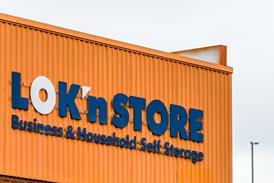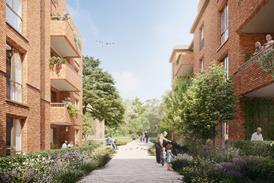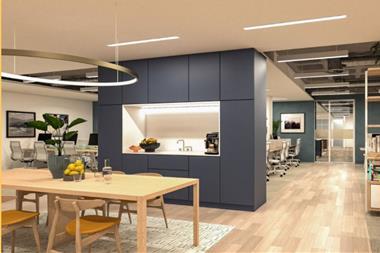To attract long-term occupiers, landlords must look to prioritise ambitious outcomes beyond regulations

The pandemic has had a lasting impact on working culture, with new forms of ‘flexible’ and ‘remote’ working considered by many organisations. While the latter poses a serious challenge for firms looking to establish a common work culture and identity across the workforce, hybrid options can also create exciting opportunities for a closer consideration of occupiers’ needs. We believe more sustainable, flexible design solutions will result in more resilient assets for changing times.
The outcomes of a ‘new way of working’ are yet to be fully understood from a commercial standpoint, but we can start to predict where these trends will take us. Typical lease lengths and continuing uncertainty mean we have not yet seen a significant reaction in the market, but we have seen developers and landlords focus on occupant experience, wellbeing and safety, through their acquisitions, investments, developments and refurbishments.
Those trends are reflected in our experience as an occupier business. We continually work to improve our culture and employee experience to support our staff. We have redesigned our offices to create healthier, more attractive work environments and introduced more wellbeing days and social events away from the office.
We have created more close-knit working groups and multidisciplinary interest teams to maintain collaborative relationships in flexible environments. We have diversified our local office footprint to accommodate teams and clients in more locations.
Portfolio-wide decisions
Our client work shows how these decisions scale up to portfolio-wide decisions. The new priorities and challenges highlighted in our latest building performance report include buildings’ sustainability, flexibility and wellbeing potential.
From a health and wellbeing standpoint, concerns around combustible cladding take the headlines, but the occupier experience of a building is also key. We found that the majority of developers still lag far behind on this front, and wellbeing is also still not being taken seriously enough.
Sustainability is gaining a lot more awareness, yet this has not yet translated into decisive action. There is a disconnect between the drive for certification benchmarks, such as BREEAM at construction stage, and post-occupancy implementation and maintenance.
Finally, buildings must hold value. The way we work was changing before the pandemic, with more remote, flexible and shared office space becoming the norm. That will most likely be accelerated as we return to the workplace.
For instance, we are helping clients to progress the inclusivity of spaces. While legislation is limited by a focus on visible disabilities that require ramps, lifts and disabled toilets, there are also less visible requirements including lighting, acoustics and other facilities to accommodate wider needs.
We also find leading occupier clients are implementing their own standards beyond industry-recognised credentials. On a major Liverpool renovation project, we were subject to extensive accessibility standards from the client’s inclusive design guide, such as enhanced circulation and door widths; powered openers; gender-neutral WCs; showers and wet rooms; design sympathetic to neurodiversity; and use of biophilia to create a calming environment.
It is possible to make allowances for diverse and specific needs in any space. To attract long-term occupiers, landlords must prioritise ambitious outcomes beyond regulations to create accessible, sustainable and future-proof buildings as standard. Doing so protects buildings for the long term and encourages the workforce – voluntarily and happily – back to using them.
Alistair Allison is managing partner at surveying group TFT


























![Hilti[82]](https://d2bq2usf2vwncx.cloudfront.net/Pictures/380x253/9/0/6/1884906_hilti82_601642.jpg)



No comments yet